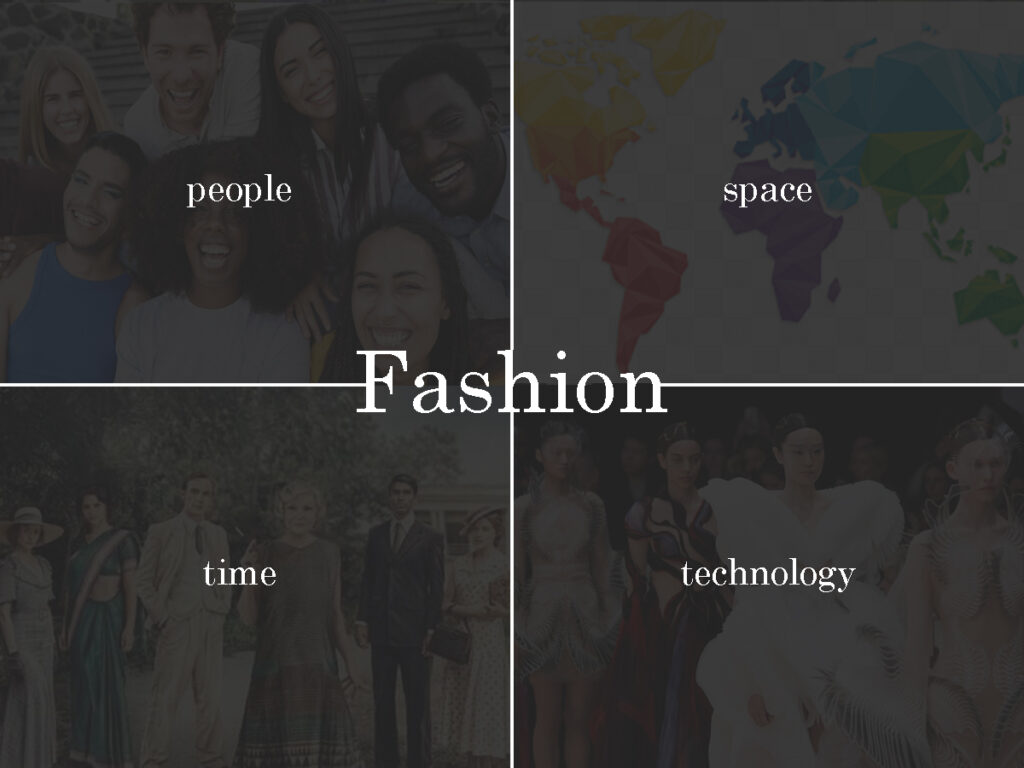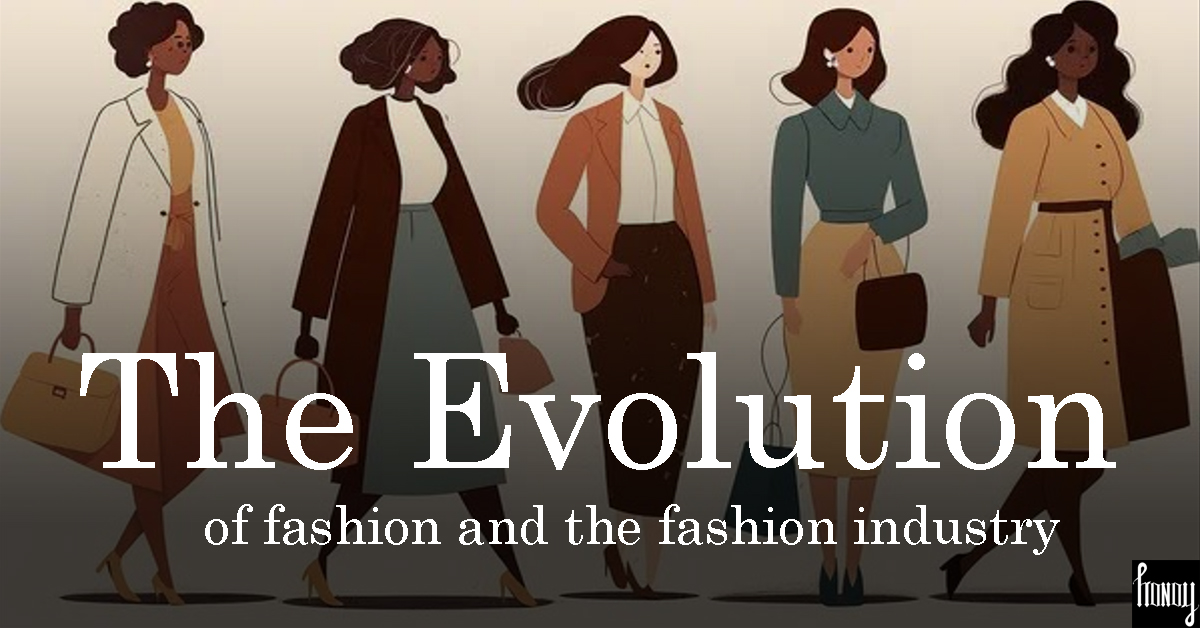Evolution of fashion is an exceptionally dynamic phenomenon. Its ability to change and adapt with people, space, time, and technology is the reason that fashion is ever changing. No two places in the world have the same history of local fashion. In the previous post, we have discussed how fashion is shaping up in this time and age. In this article, we delve into how seamlessly fashion blends innovation, creativity, and cultures. We will try to understand the historical roots of fashion and how it has continually spiraled into the dawn of the digital age.
Is evolution synonymous with history of fashion
At first glance, Evolution of fashion and history of fashion might appear interchangeable in the context of fashion. Yet, they bear distinct significance. While history is a record of various chapters of style and technological advances in the fashion industry, evolution captures the dynamic process of change that weaves those chapters together. Fashion’s evolution isn’t a mere retelling of past trends and its milestones; it’s a continual metamorphosis of human desires and creative expressions, adapting to socio-economic shifts, inter-cultural influences, and technological advancements. Evolution is more of a global phenomenon governing the structures of the fashion industry and it’s working as opposed to the history of fashion which is heavily influenced by geographical locations.
A peek into the history of fashion
Technically speaking, the first fashion statement was possibly made by Adam and Eve, when they covered themselves up with leaves for modesty purposes. But we have come a long way from there. Throughout the history of mankind, fashion has been one constant that has marked every step of its way. From stone age to iron age, to modern times to todays world, man’s (and women’s) sartorial choices have reflected the times they have thrived in. Greeks, romans, Italians and undeniably the French have all left their mark on the history with their respective fashion influences of their times.
Today the world of fashion has been threaded with a common strand because of colonialism which has really sown the seeds for international fashion crossovers. We will learn in depth about the world’s history of fashion, with dates and events, in our future posts.
Factors influencing evolution of fashion
Fashion as a concept does not exists independently. It is always in association with the following factors: People, Space, Time, and Technology. The evolution of fashion from being a means of modesty to this huge 1.7$ trillion industry is because of these four influencing factors.

Factors influencing the evolution of fashion: people, space, time and technology
People
Fashion is for the people, of the people and by the people. The sole purpose of fashion is to exist to support the people involved in it. Whether they are consuming it or producing it. Whether they are selling it, promoting it, or simply writing about it. Every human in this world is directly or indirectly associated with the fashion industry because everyone wears clothes. And so, the needs of these people are the biggest factor influencing the evolution of fashion and this fashion industry.
Space
Fashion is not a unified global phenomenon, even in today’s world of instant communication. Rather it is still very much a regional/geographical story. Each country, every culture in this world has their own stories of sartorial evolutions to tell. In India also, we can see that no two states have similar codes of dressing for regional cultural celebrations. We might have a unified code of what constitutes formal wear in our offices and professional lives through out the country, but not when it comes to our individual styles and dressing sense.
Time
The concept of how time is a factor is a little tricky to understand. The passage of time itself is history and we have mentioned that history and evolution are two distinct things for fashion. When talking of evolution of fashion, one has to carefully see how over time the needs of the consumer have changed and in turn how that has influenced the fashion designers that are in charge of creating fashion. Both these activities directly affect how the marketers and advertisers of fashion change their strategies suiting the target audience and the time they are in.
Technology
We have come a long way from wearing animal skins. The Industrial Revolution revolutionized production, while today, the digital age has transformed the very fabric of fashion. While in the past humans may have made the error of neglecting the price we pay for technological advancements, but today fashion designers and the fashion industry in general has developed a higher conscious when taking technology forward. Simple examples are producing dyes that are less harmful to both nature and humans as compared to what was being produced earlier. There are various facets how technology appears in fashion, the late designer Alexander McQueen used a 3d holograms in projecting her model to create a unique experience for his audience.
Fashion in the digital age and the future of fashion
The dawn of the digital age has ushered in a new era of fashion, redefining the way we consume, create, and perceive it. The future of fashion is unpredictable, but we know where it is headed. The pandemic accelerated the digital transformation of the fashion industry which no one saw coming. Online platforms and e-commerce have become the norm, offering a global marketplace accessible from the comfort of one’s home. And this will continue to dominate the consumer behaviors’.
Virtual fashion shows and online shopping experiences will be the focus of future industry leaders. With data being the most important commodity of today, analytics and data-driven insights have unraveled consumer preferences and behavior. And the fashion industry has not been left untouched. Today, fashion brands at all levels want to leverage this information to tailor their offerings, creating a more personalized shopping experience for the end customer.

The future of fashion lays in online marketplaces, sustainability, robotics and virtual fashion.
Today, there are intense conversations around sustainability leading to actions. From eco-friendly materials to circular fashion calendars, the fashion industry is embracing responsible practices for a greener earth. Recycling and upcycling are terms which I will discuss in our future posts. The digital age has heralded simplification, reflecting in both design aesthetics and shopping experiences. Streamlined silhouettes and clutter-free online interfaces exemplify this shift. Not only this, if we look at the fashion calendar, designers no longer feel the need of doing ten shows a year and they want to go back to times when only two – three collections a year will produce a better fashion impact.
When we investigate fashion’s future, what we see are astonishing possibilities led by human desire to innovate and technology’s rapid advance. The boundaries of science fiction and reality are thinning every day with robots that can sew and cut fabrics and 3D-printed garments. The hottest topic today is AI and even in fashion it has lasting impressions. Algorithms that predict style trends are poised to revolutionize the landscape of global fashion.
AI-driven insights will inform designers and brands on how to navigate the ever-shifting plains of consumer preferences. With technological revolution the line between the physical and digital worlds blurs as virtual reality becomes the norm of the day in fashion. Clothes designed exclusively for virtual experience. Bridging the gap between imagination and reality. Digital catwalks showcasing collections to a global audience, all at the same time. The future of fashion is amazing, and I want you to tell me how do you see the future of fashion and where do you see yourself in it?
Conclusion
Evolution of fashion is a never-ending process. We have all witnessed it and will continue to be a part of history of fashion and it’s evolution. How we contribute to it, only time will tell. And if you want to be a part of this legacy, then let us start a conversation of where fashion came from and where it is headed. Technology will of course be our guiding compass, but only human will and thirst to express will decide the facet of fashion and its future.





























Pingback: Rohit Bal: The bad boy of Indian fashion -5 min
Pingback: ritu kumar first lady of indian fashion - 5 mins
Pingback: most beautiful Russian porcelain craft Gzhel-5 min read
Pingback: 10 Best fashion museums in London,UK
Pingback: The best way to research for a fashion collection in 9 steps
Pingback: Yves Saint Laurent: The Revolutionary in 5 min
Pingback: Tarun Tahiliani The Great Maestro Of Indian Fashion - Fashionology
Pingback: Sari : A Quick History And Its Evolution In The 21st Century
Pingback: Importance Of Trends And Forecast In Fashion In 6 Points
Pingback: Understanding Quiet Luxury In 5 Min
Pingback: 8 Best Fashion Encyclopedias